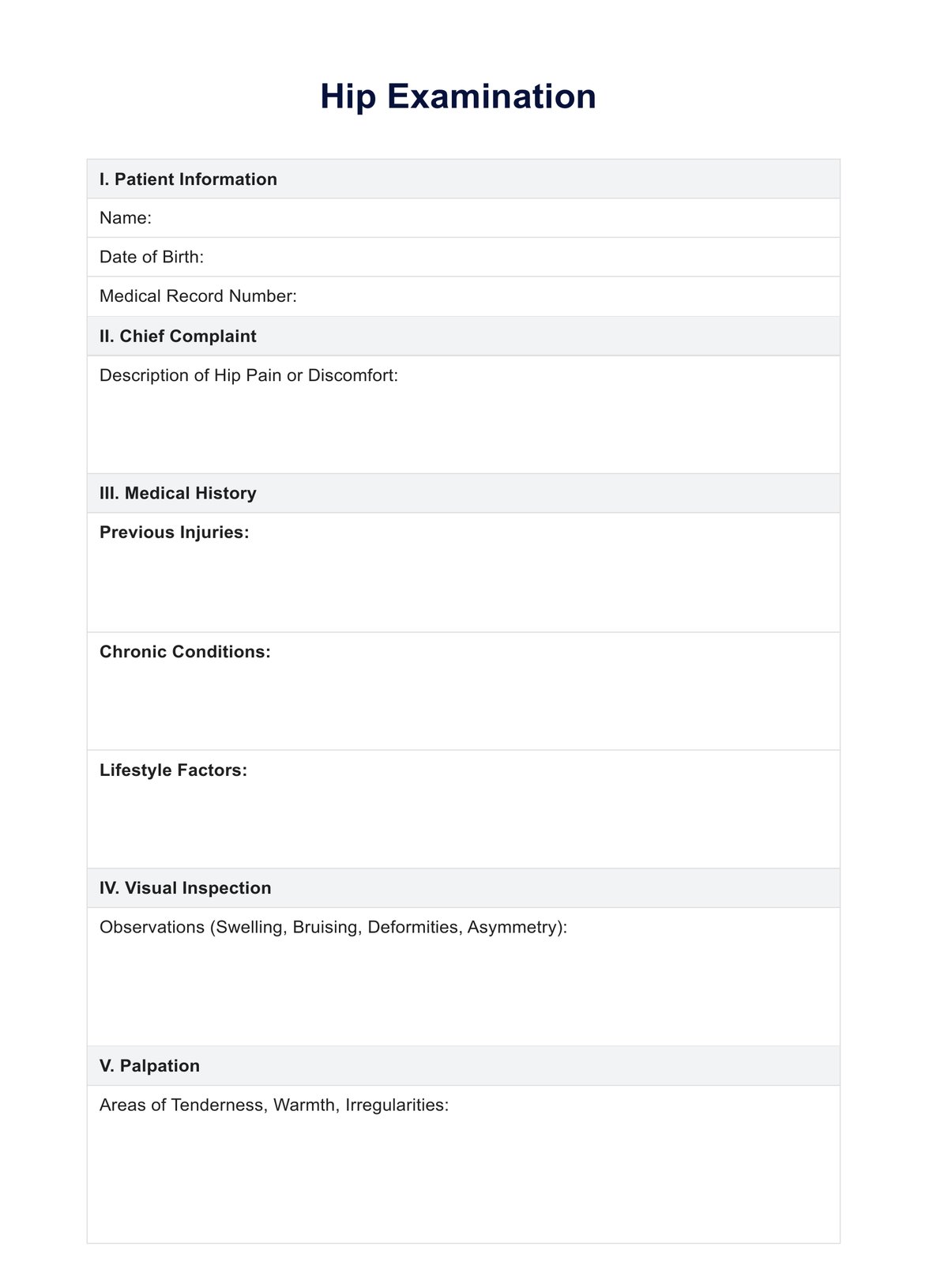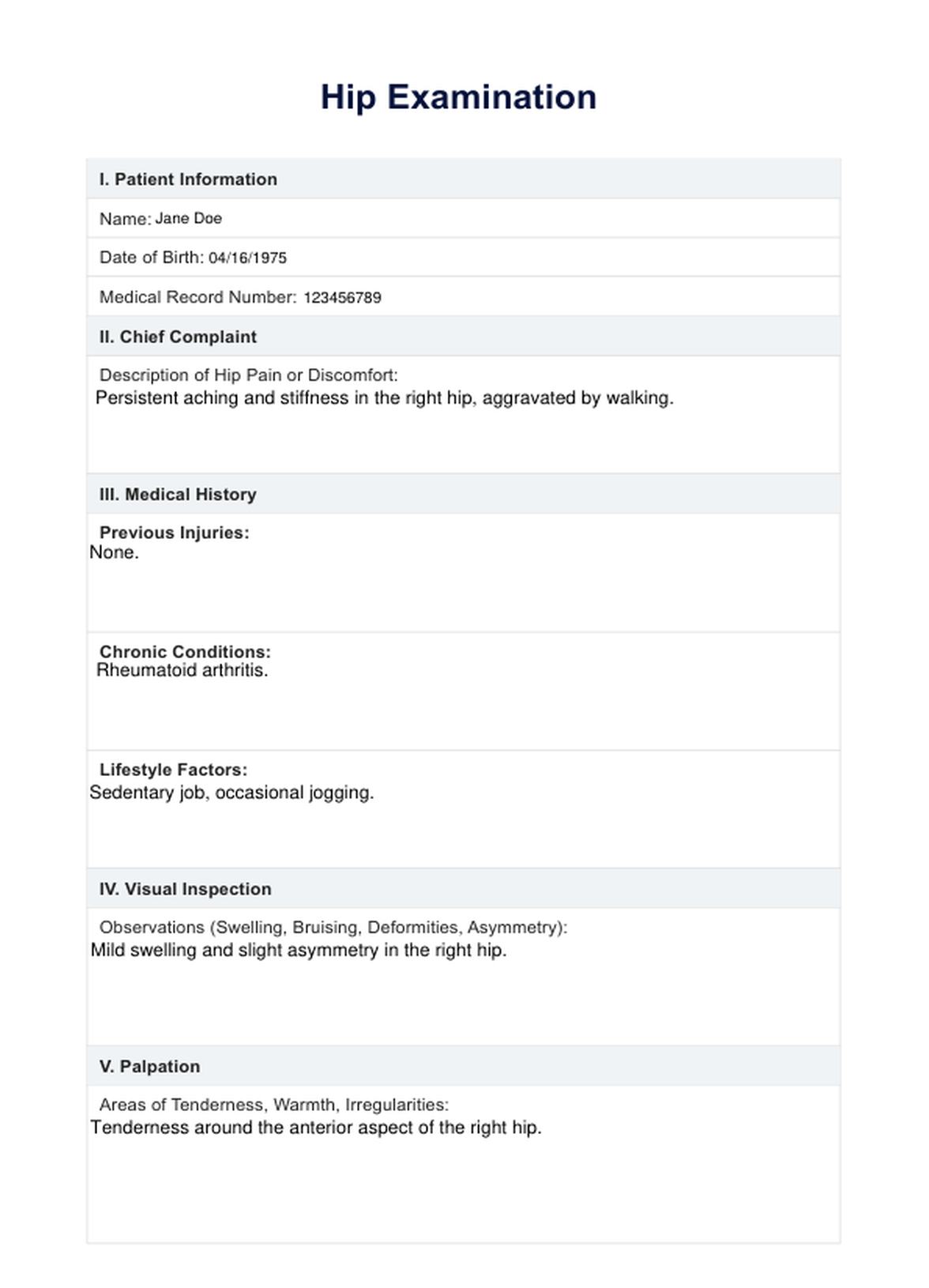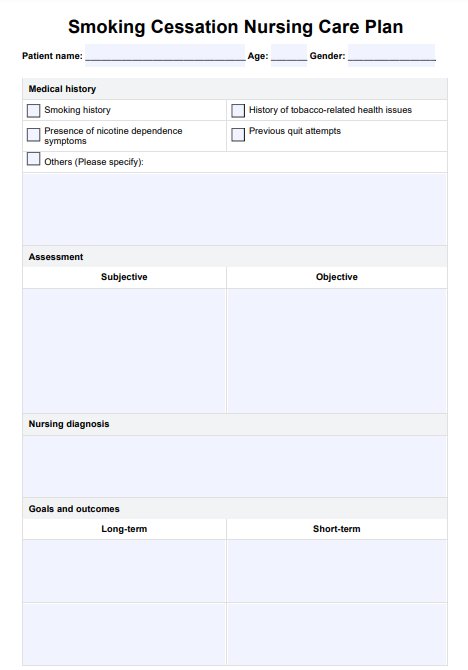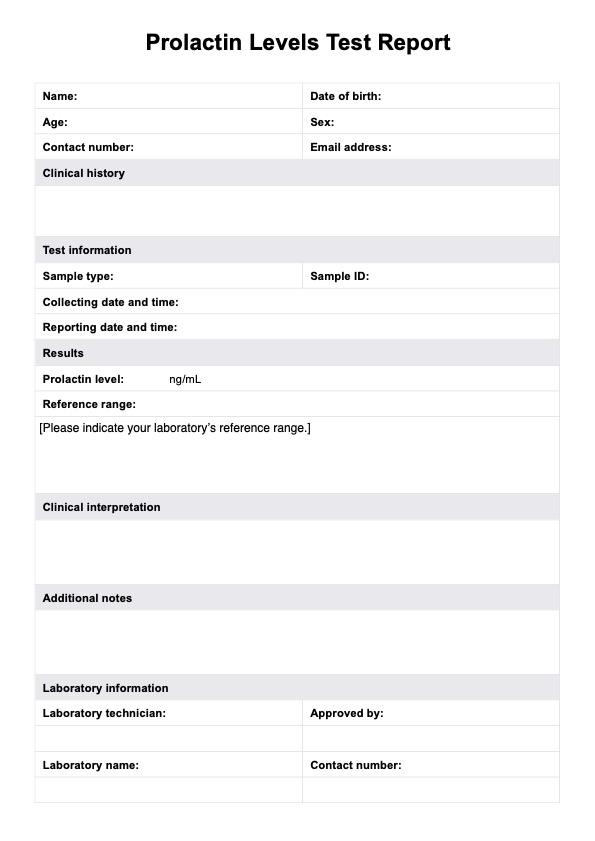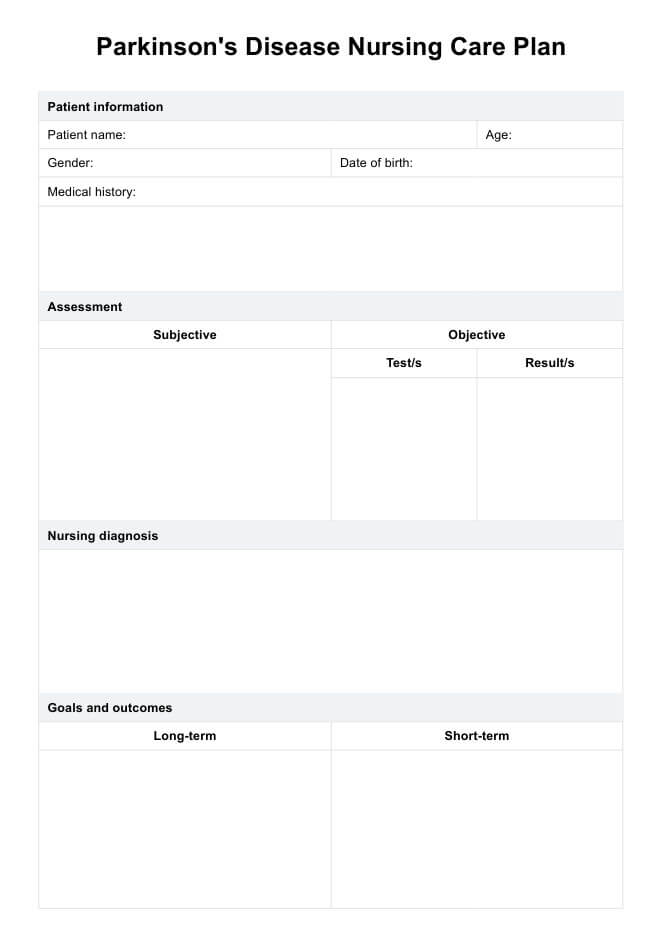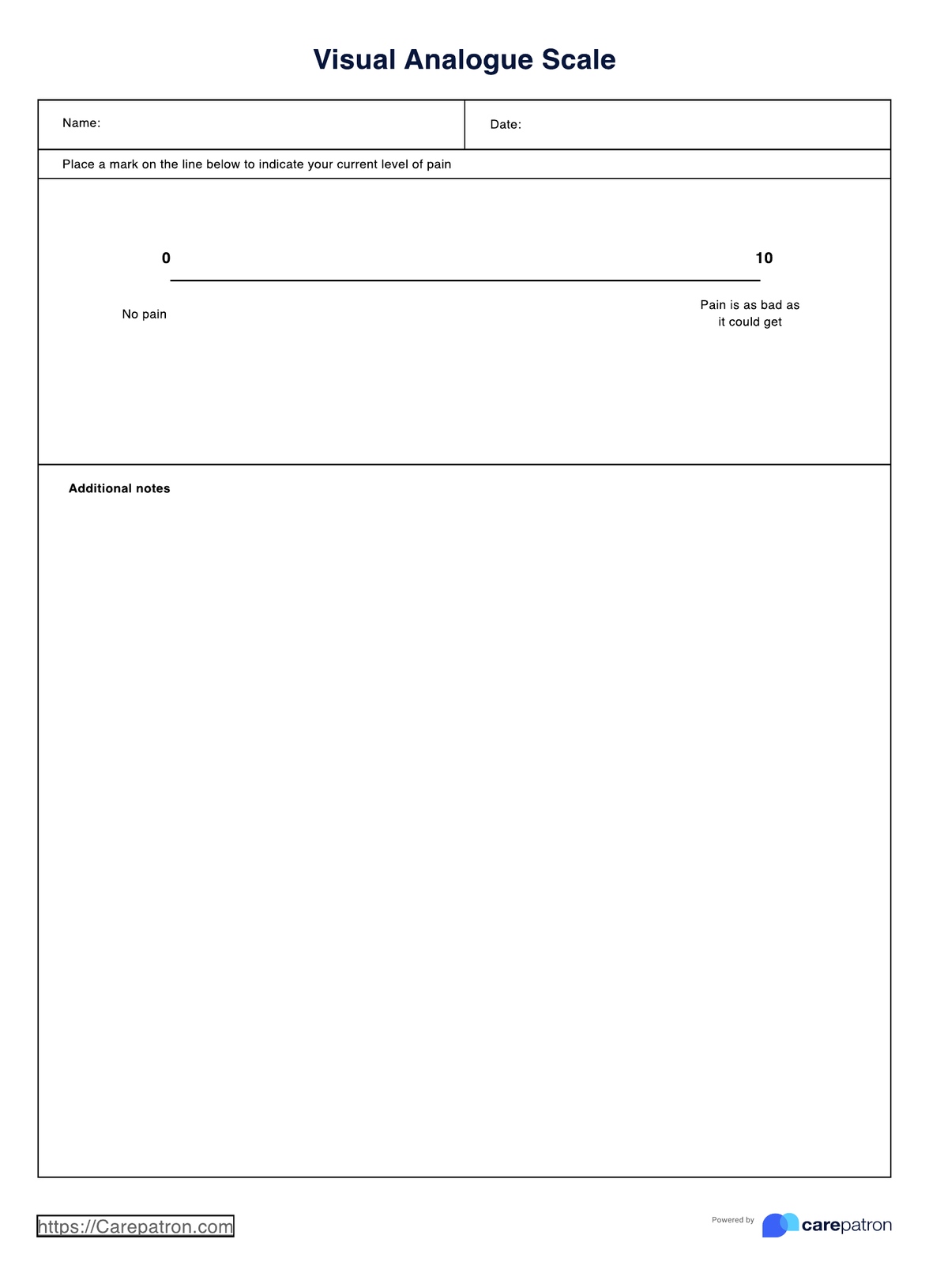Hip Examination
Explore the comprehensive Hip Examination Template for accurate assessments, diagnosis, and treatment of various serious hip disorders, and injuries.


What is a Hip Exam?
A hip examination is a critical medical process designed to diagnose and manage hip-related conditions. This thorough assessment delves into the root causes of hip symptoms, such as pain, stiffness, and limited mobility, often linked to injuries or aging.
The examination starts with a detailed review of the patient's history, where information about the onset, duration, and nature of hip discomfort is collected alongside past injuries, chronic conditions, and lifestyle factors affecting hip health. During the physical examination, healthcare professionals visually inspect the hip for signs of swelling, bruising stress fractures, or deformities and palpate the area to detect tenderness or irregularities suggestive of muscle strains or joint inflammation.
Key to this assessment is evaluating the hip's range of motion and mobility. The hip's flexibility and movement limitations are assessed through various exercises and detecting any pain or stiffness. Specialized tests like the Log Roll, FADIR, Hip Scour, Trendelenburg, and Thomas tests are conducted to pinpoint specific hip problems.
Additionally, diagnostic imaging tools such as X-rays, MRIs, and CT scans are used to visualize the hip's internal structures, aiding in detecting fractures, arthritis, and other abnormalities. These findings are then integrated to formulate a differential diagnosis, considering potential conditions like osteoarthritis, bursitis, labral tears, and tendonitis. A hip examination is a comprehensive process integrating patient history, physical evaluation, and diagnostic imaging to accurately diagnose and guide the treatment of various hip conditions.
Hip Examination Template
Hip Examination Example
The different physical exams for hip and groin pain
Hip examinations are essential for evaluating the function muscle strength and integrity of the hip joint, involving a variety of tests and assessments to determine the cause of hip and groin pain.
- Motion Tests involve essential assessments to evaluate the hip joint's range of motion. These tests detect discomfort or limitations and include key movements such as flexion, extension, abduction, adduction, and internal and external rotation of the hip joint.
- Log Roll Test is a procedure where the patient lies flat, and the leg is rotated inward and outward. This test assesses the hip joint's integrity and is useful for identifying labral tears or hip arthritis.
- FADIR Test serves the purpose of assessing for hip impingement and labral tears. The method involves flexing, adducting, and internally rotating the hip while the patient is on their back.
- Hip Scour Test functions to evaluate the joint's cartilage health. It involves applying a downward force on the thigh while rotating the hip, looking for pain or grinding sensations indicative of cartilage damage or osteoarthritis.
- Thomas Test aims to assess the flexibility of hip flexors. The technique involves lying on the back and bringing one knee to the chest to check for hip flexor tightness.
- Trendelenburg Test is aimed at evaluating hip abductor strength. The execution involves standing and lifting one foot off the ground, observing for pelvic drop on the raised side.
- Differential Diagnosis integrates test findings with patient history and symptoms to identify specific hip conditions like impingement syndromes or bursitis.
- Specialized Motion Tests include flexion and extension, where flexion assesses forward hip movement and extension evaluates backward movement—abduction and adduction test side-to-side mobility, revealing possible muscle strains or joint issues. Internal and external rotation assess the hip's rotational capacity, which is crucial for daily activities. Gait analysis involves evaluating the walk to identify hip dysfunction, pain, or biomechanical problems.
- Special Tests for further investigation may include the FABER or Ober's test, based on initial motion test results.
- Complementary Assessments like the Log Roll Test involve pain-free leg rotation while lying down, where clicking or pain can indicate labral tears or arthritis. Intra-articular Joint Injection is diagnostic and therapeutic, confirming joint-related pain and alleviating discomfort. This procedure is performed under imaging guidance, with post-injection care advice.
These comprehensive hip examinations and tests are integral in diagnosing and managing hip-related conditions, offering insights into joint health and guiding appropriate treatment strategies.
The difference between hip joint pain and muscle pain
Understanding the difference between joint and muscle pain is crucial in diagnosing and treating any serious hip injuries or hip or groin pain-related issues. It guides healthcare professionals in pinpointing the exact cause of a hip injury or hip or groin pain and informs the appropriate course of treatment. This differentiation is a key component of a comprehensive hip examination.
Joint pain often presents as a deep, aching discomfort within or around the hip joint. It may be associated with joint stiffness, especially after periods of inactivity or during the morning. Common causes of joint pain include osteoarthritis, rheumatoid arthritis, bursitis, and femoroacetabular impingement. These conditions can lead to inflammation, cartilage degradation, or mechanical stress within the joint. Patients may experience a reduced range of motion, swelling, and a sensation of "locking" or "giving way" of the hip joint. The pain can be exacerbated by weight-bearing activities and relieved by rest.
Muscle pain in the hip region often feels more superficial than joint pain. It can present as a sharp, acute pain or a dull, chronic ache and is typically localized to a specific muscle group. Muscle pain can result from strains, overuse injuries, muscle tears, or myofascial pain syndrome. Activities that involve repetitive motion or excessive strain on the hip muscles can trigger or exacerbate this pain. Common symptoms include tenderness in the affected muscles, muscle spasms, and pain that worsens with movement or exercise. Unlike joint pain, muscle pain does not lead to joint stiffness or a reduced range of motion unless there is significant muscle tightness or spasm.
Clinicians perform specific tests during the hip examination to differentiate between joint and muscle pain. Palpation is used to locate the exact point of tenderness – joint line tenderness suggests joint pain, while tenderness over a muscle suggests muscle pain. A limited range of motion with passive and active movements indicates joint pathology, whereas muscle pain typically does not restrict joint motion unless there is significant muscle guarding or tightness. Tests like the FADIR or Log roll test can provoke symptoms specific to joint pathology, while resistance tests can help isolate muscle or tendon injuries.
Understanding the nuances between joint and muscle pain is pivotal for accurate diagnosis and effective treatment in hip and groin-related conditions.
How to perform a hip assessment
A critical step in diagnosing and managing hip-related conditions is performing a hip assessment involving a comprehensive and systematic process. The assessment begins with studying the patient's history, where understanding the nature, onset, duration, and severity of symptoms is crucial. It's important to enquire about any past hip issues or surgeries and assess how the patient’s daily activities and recent changes might be impacting their own hip function.
The next step involves visual inspection and palpation. This includes looking for signs of swelling, asymmetry, or changes in the skin's appearance around the hip area and gently feeling the hip joint and surrounding areas for tenderness, warmth, or abnormalities. Following this, range of motion testing is conducted, assessing the forward (flexion) and backward (extension) movement capabilities of the hip, evaluating the leg's movement away from (abduction) and towards (adduction) the body, and checking the internal and external rotation ability of the hip.
Strength testing is another crucial aspect, where the strength of the hip muscles, particularly the gluteals and lateral hip and flexors, is evaluated. Observing the patient performing functional movements such as standing or walking is also part of this assessment to gauge hip functionality. Special tests are then conducted, including the FADIR Test to check for impingement or labral tears, the Thomas Test to assess hip flexor tightness, and the Trendelenburg Test to evaluate hip abductor strength.
The final step in the hip assessment process is synthesizing the findings. This involves integrating the information gathered from the patient's history, physical examination, and special tests to formulate a diagnosis. Additional diagnostic imaging or tests may be planned to confirm the diagnosis or better understand the condition. This detailed and thorough approach is crucial for accurately diagnosing the cause of hip pain, which guides the development of an effective treatment plan.
Commonly asked questions
Expect a series of steps, including patient history, physical examination, range of motion tests, and possibly special tests like the FADIR test.
Through a combination of physical exams and diagnostic imaging like X-rays or MRIs to visualize the internal structures of the affected hip part.
Treatment can include physical therapy, medications, lifestyle modifications, and possibly surgical interventions depending on the diagnosis.

.jpg)
